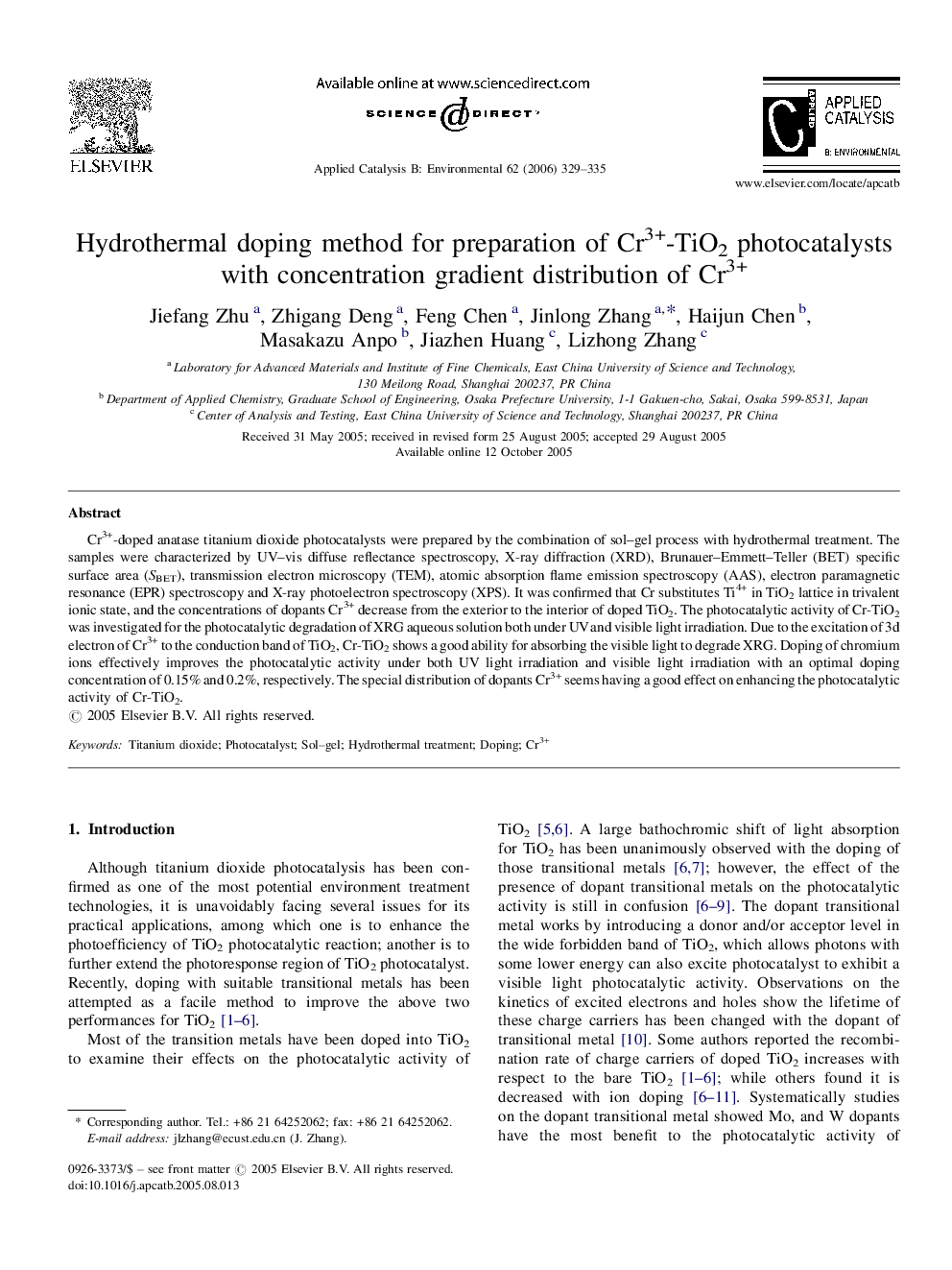| Article ID | Journal | Published Year | Pages | File Type |
|---|---|---|---|---|
| 49073 | Applied Catalysis B: Environmental | 2006 | 7 Pages |
Cr3+-doped anatase titanium dioxide photocatalysts were prepared by the combination of sol–gel process with hydrothermal treatment. The samples were characterized by UV–vis diffuse reflectance spectroscopy, X-ray diffraction (XRD), Brunauer–Emmett–Teller (BET) specific surface area (SBET), transmission electron microscopy (TEM), atomic absorption flame emission spectroscopy (AAS), electron paramagnetic resonance (EPR) spectroscopy and X-ray photoelectron spectroscopy (XPS). It was confirmed that Cr substitutes Ti4+ in TiO2 lattice in trivalent ionic state, and the concentrations of dopants Cr3+ decrease from the exterior to the interior of doped TiO2. The photocatalytic activity of Cr-TiO2 was investigated for the photocatalytic degradation of XRG aqueous solution both under UV and visible light irradiation. Due to the excitation of 3d electron of Cr3+ to the conduction band of TiO2, Cr-TiO2 shows a good ability for absorbing the visible light to degrade XRG. Doping of chromium ions effectively improves the photocatalytic activity under both UV light irradiation and visible light irradiation with an optimal doping concentration of 0.15% and 0.2%, respectively. The special distribution of dopants Cr3+ seems having a good effect on enhancing the photocatalytic activity of Cr-TiO2.
